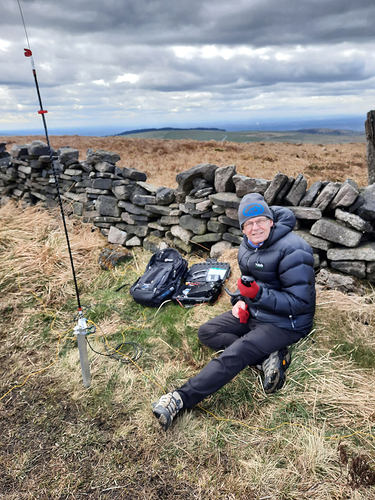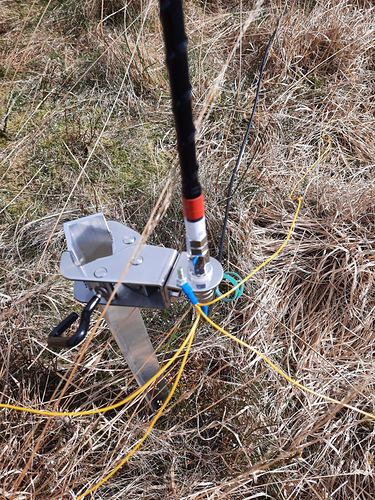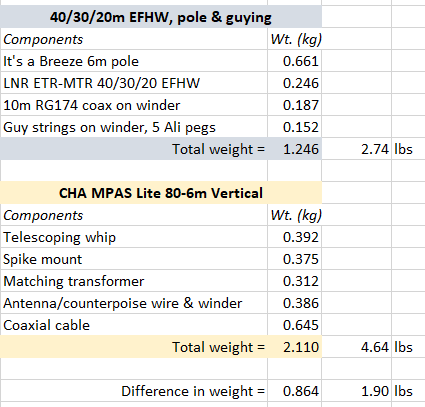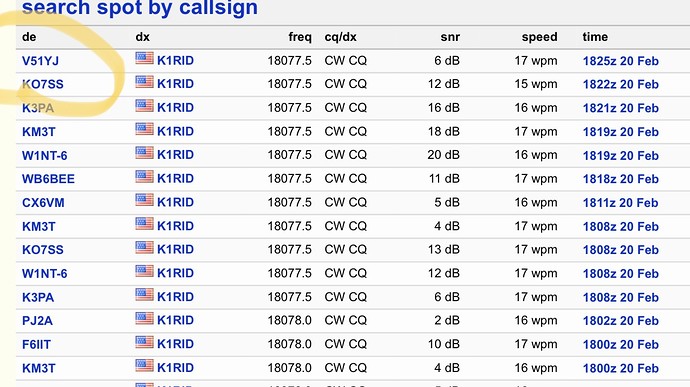A few months ago I asked on the forum about peoples experience with using Ampro style Hamsticks for activations. The feedback I got was mixed, with most people saying long wire was the way to go. I use Hamsticks on top of my Campervan and have had some great experiences. Two weekends ago I had a QSO with a guy in Reunion Island a distance of 6,134 miles (on 10w) so my enthusiasm was sparked again for these simple antennas.
With lockdown slowly lifting, yesterday I decided to activate Shining Tor (G/SP-004). With near freezing temperatures and winds of 25mph, I wasn’t expecting social distancing to be an issue. Arriving at the Cat and Fiddle, there were just two other cars parked there. It was freezing!
The first decision was what antenna to take? In these conditions I didn’t want to mess about with long wires and Sota Poles, so I opted for a aluminium stake, 20m Hamstick and radials. On the walk up, the wind was unrelenting, so I consoled myself that at least I could just try my handheld. Arriving at the top, my fears were met, the North Westerly wind from Greenland was bitter. Within minutes of taking off my gloves my hands were beginning to freeze. With a couples of 2m QSOs on the handheld, it was decision time, should I try HF?
I found that by getting low behind the wall, just down from the trig point I could get out of the worst of the wind, so I decided to go for it.
The ground was fairly moist so getting my aluminium stake in the ground, was pretty easy. I have included a photograph of the set up I use. It consists of a short aluminium stake, a stainless steel 3/8 mounting bracket and four 10’ radials laid on the ground.
I use a Xiegu G90 for HF and an initial listen around on the 20m band was not that encouraging. I could hear a few Eastern European stations, the inevitable, high powered Italian stations, but not a lot else. Nothing from North America. The Xiegu has an amazing ATU, the SWR was near perfect. As others have said it could probably tune a length of wet string (maybe an experiment for the future)!? In the next hour I made 9 QSOs the furthest was 1,700 miles away in Russia.
So there we have it, my love for this £22 antenna continues to grow. Is it a compromise, of course it is, but it took me about three minutes to deploy and despite poor band conditions, worked well.


 I then got the SWR down to about 1.3:1 without an ATU.
I then got the SWR down to about 1.3:1 without an ATU.
